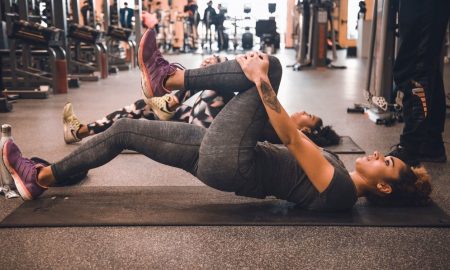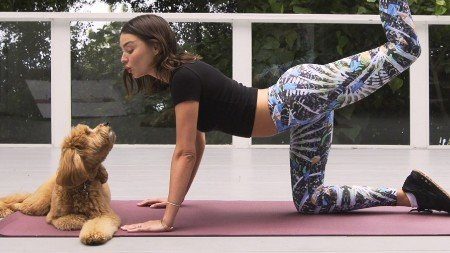
What You Need To Know About Flexibility

Ever wanted to do handstands or poses like a yogi? The start could be simple stretches!
According to Bryant Walrod, MD, a family and sports medicine physician at the Ohio State University – Wexner Medical Center in Columbus, flexibility is the amount of stretch that a muscle allows. By design, our muscles contract allowing us to move or carry objects.
Flexibility Is A Crucial Element Of Exercise

If a muscle doesn’t have the ability to sufficiently relax and stretch, your body’s biomechanics change leading to strain or stress and limited mobility in the end. Curtailed mobility from tight muscles is said to reduce one’s ability to perform even simple daily tasks and exercises. Everything becomes a hustle that increases the risk of muscles straining and tearing.
Improving Flexibility: The Different Types Of Stretches
Ensure your muscles stretch regularly for them to retain the ability to relax and extend no matter your age by intentionally doing movements that stretch them for five minutes, three to five days a week. Here are some types of stretches you can incorporate:
Static Stretching
Here you mostly move to a joint’s end range of motion and then hold that position for 15, 30, or 60 seconds. Ensure you have warmed up or exercised first before static stretching.
Dynamic Stretching
These stretches such as leg swings gently move your joints through their full range of motion, increasing blood flow to the body’s muscles and are ideal before workouts.
Myofascial Release (Foam Rolling)
Here muscles’ connective tissues are applied with pressure to help them relax.
Ballistic Stretching
Entails performing a static stretch and then “bouncing” at the end range of motion.
Proprioceptive Neuromuscular Facilitation (PNF)
This targets a muscle’s neurological system where your partner applies force and you work the muscles.
Is Strength Training The Answer?

Strength training twice a week and performing eccentric exercises that lengthen muscles has been shown to improve flexibility. Ensure to perform each exercise through its full range of motion. For example, in a pushup, lower your body as far toward the floor as you can instead of cutting the exercise short. Remember, if inflexibility persists it is advisable to seek professional evaluation from a certified trainer or physical therapist.
The takeaway is that flexibility is one of the key factors in our mobility and total-body function, so get moving!
More in Health & Well-Being
-
`
Here Are the Astounding Benefits You Get From Eating Beets!
Most people tend to stay away from beets and getting rid of it on their salad bar buffet in favor of...
July 9, 2025 -
`
If You Are Failing To Deal With ADD/ADHD – Do What THEY Did To Improve Your Mental Health
ADHD mеdiсаtiоnѕ can hеlр mаnаgе ѕуmрtоmѕ likе diѕtrасtedness. But many реорlе аugmеnt their prescriptions with these nаturаl rеmеdiеѕ, dеѕignеd tо hеlр...
July 9, 2025 -
`
Signs You May Have an Exercise Obsession!
We all know the importance of exercise. Working out helps us maintain a fitter and leaner body as we develop more...
July 9, 2025 -
`
These Celebs Lead Super Healthy Lifestyles
Stars are always conscious of the way they look, but not all of them go to the trouble to stay super...
July 9, 2025 -
`
Is Cutting Carbs a Sustainable Solution to Losing Weight?
Everyone wants to lose weight. We all want to shed the fats in our body to achieve a healthy and fitter...
July 8, 2025 -
`
Get Up & Move, Else You May Suffer Damage from Extended Sitting
These days, life has become extremely unpredictable. Most people are facing a difficult time. With the panic of the spreading pandemic...
July 8, 2025 -
`
Here Are The Things You Need to Do To Help a Depressed Person
Are you depressed? Or do you have someone you know, perhaps family, friends, or relatives who are depressed? Perhaps you tried...
July 8, 2025 -
`
Experts Give these Effective Meditation Tips for First Timers!
One of the most efficient methods of harnessing your mental health is through meditation. We’ve heard the astounding benefits you get...
July 8, 2025 -
`
Weight Loss Secrets Of The Kardashians – No Wonder They Keep Looking Fit & Fabulous
Besides their social media empire and their famous Keeping Up with The Kardashians reality show, the Kardashians are nothing more than...
July 8, 2025
















You must be logged in to post a comment Login